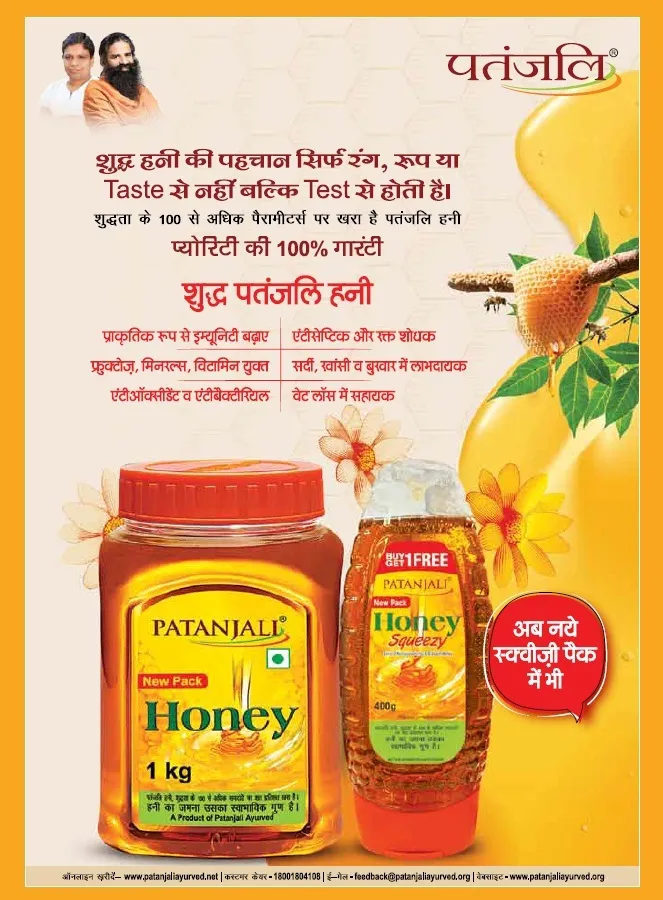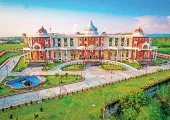Origin of life, heredity and sex differences
On

Heredity under genetics, the similarities and differences between organisms and their ancestors or descendants, the reasons for their origin and the possibilities of evolution are studied due to heredity. Every living being is basically made up of cells. Some chromosomes are found in these cells. Their number is fixed in each species. Inside these chromosomes there are some DNA like beads of a necklace. Chemical units of DNA are found which are called genes. These genes and chromosomes are responsible for the appearance, functioning and acquisition of traits or qualities. All living beings, whether animals or plants, are exact replicas of their ancestors. In scientific language it is called the principle of 'like begets like'. Under genetics, certain factors are specially studied:-
The first factor is heredity. The heredity of an organism is the chemical information received from the germ cells of its ancestors or parents. For example, how a creature will develop will be determined by its heredity.
The second factor is the difference that we find or can find between a creature and its offspring. Almost all organisms display characteristics of their parents or sometimes grandparents or the generations before them. It is also possible that some of its symptoms are completely new. There are many reasons for such changes or differences.
The development of organisms also depends on the circumstances and their environment. The environments of animals are extremely complex; Under this, all the substances and forces of the living being are included and other living beings (Organism), which keep influencing their lives.
In the modern context, Wilhelm Johannsen, in 1911, established the distinction between external characteristics (phenotype) and hereditary characteristics (genotype) of organisms. The external characteristics of organisms keep changing along with their development, such as substantial physical differences are visible in the embryo stage, infancy, youth and old age of the organisms. On the contrary, their ancestral traits or characteristics are stable and unchanging. The interaction of ancestral traits and environment of any organism results in its growth and development. Therefore, ancestral traits determine the 'norms and reactions' of organisms, i.e. the way they respond to the environment. These types of reactions create the external characteristics (phenotype) of organisms.
Genetic elements are used in agricultural science for crop size, production, disease prevention and breed improvement of pet animals etc. With the help of genetic elements, study of evolution, embryology and other related sciences is facilitated. This science has resolved many misconceptions related to ancestral traits and diseases. This science has thrown light on many problems of the origin of twin children and eugenics. Similarly, human society has benefited from many important achievements of population genetics. T. H. Morgan (1886-1945) and his colleagues showed that certain genes, whose inheritance crossing over became known through experiments and is present in certain chromosomes, visible only through microscopes. He also explained that these genes are arranged in a fixed sequence within the chromosomes, due to which it is possible to make their genetic map. These people made several maps of the genes of the honey fly, Drosophila. Professor Muller guided new scientific research through groundbreaking experiments in the field of mutation. Amazing improvements have been made in domesticated animals and agricultural breeds through various methods of artificial or induced mutation, all of which have proved extremely beneficial for human welfare.
Chromosome
Two substances are especially included in the structure of chromosome - (1) Deoxyribonucleic acid or DNA. (D.N.A.), and (2) a type of protein called histone. It is a hereditary matter. D.N.A. (D. N.A.) The structure of the molecule includes four organic acids - two purines, two pyrimidines, one sugar - deoxyribose and phosphoric acid. Purine contains Adenine and Guanine and Pyrimidine contains Thymine and Cytosine. D.N.A. A molecule of DNA (D.N.A.) consists of two strands, which are spirally coiled around each other. Every DNA (D.N.A.) The formula consists of four organic bases - thymine, cytosine, adenine and guanine, one after the other, and they are connected to each other in a special way. These four bases and their associated sugar and phosphoric acid molecules form a single tetranucleotide and several thousand tetranucleotides form a DNA. A. (D.N.A.) molecule is formed.
DNA of different creatures the reason for the variation is the difference in the sequence of Samakshas. D.N.A. And another such nucleic acid R. N. A. (R.N.A.) due to the presence of organic compounds absorb most of the ultraviolet in the region of 2,600 angstrom or 0.0002 mm. On this basis, DNA A cytological quantitative approach is performed. two among creatures special types of centrioles are found. One is found in the nuclei of the larval salivary gland in some Diptera, Insecta. These chromosomes are several hundred times longer and wider than the normal chromosomes of the same species. For this reason they are called giant chromosomes. Their structure appears somewhat different from normal mitosis and meiosis centrosomes. Here, instead of one chromosome, there is a transverse row of such granules which have more ability to be stained. All the granules of several such transverse rows from one end of the chromosome to the other are identical and the granules of other rows have characteristics and variations.
Due to the longer length of these chromosomes, it is believed that they undergo complete despiralisation and perhaps some elongation of the protein also occurs. Due to being wider, one chromosome synthesizes another nucleus - chromosome similar to itself. In normal condition, during mitosis, these two threads get separated from each other, but this does not happen in megachromosome. Both the threads remain connected to each other. The number of megachromosomes is half the number of normal chromosomes, because each thread gets paired with another thread similar to itself. This phenomenon is called somatic pairing.
Another strange type of chromosome is found in animals. This is called lampbrush chromosome. These chromosomes are found in the nuclei of eggs of such animals which have high amount of yolk, such as fish, amphibians, reptiles, birds etc. Chromosomes are made up of two paired pairs, similar to simple diplotene-diakinesis chromosomes. Both the coupled threads are connected to each other at some places and remain far away from each other at the remaining places. These joints are considered kiasma. On each thread, which is called Chromonema, there are granules of different sizes at different places which are called Chromomeres. A pair or more lateral loops are attached to each chromomere. The side loop is also made up of threads similar to chromonema, but ribonucleo-protein granules gather around it due to which these threads appear thick. Chromomeres are also derived from chromonema. Nuclei are produced on particular chromosomes.
Each cell of most animals has two integral sets of chromosomes. mature sex cells (mature sex-cells) one kulak remains. Such animals and cells are called diploid, but some animals, especially plants, have more than two sets of chromosomes and are called polyploid. If the centromere of a diploid animal gets doubled, due to which there are four alleles in its cells, like (A1 K1 K1; B1 B1 B1 B1, C1 C1 C1 C1 etc.) then such an animal is autopolyploid or (autotetraploid). They say. If the chromosomes of a diploid hybrid are doubled, then such an animal is called allopolyploid. If a diploid animal, whose chromosomes are A1 B1 B1 C1 C1 etc., is hybridized with another animal whose chromosomes are A2 K2 B2 B2 C2 G2 etc., then the chromosomes of its offspring will be A1 K2 B1 B2 C1 C2 etc. A1 K2 B1 B2 etc. will be different from each other and generally there will be no pairing. If the chromosomes of this creature are doubled, then their cells will have K1 K1 K2 K2; b1 b1b2 b2; The chromosomes will be C1 C1 C2 C2, etc. This will be called allopolyploid (allotetraploid). Polyploids may also have more than four alleles. It is clear that in autopolyploids, quadrivalents will be produced at the zygotene stage, because four chromosomes of each type are present and the pairing of four chromosomes forms a quadrivalent. At the time of cell division, each pole will not receive an equal number of chromosomes. It often happens that due to breakage of a quadruvalent, three threads reach one pole and only one thread reaches the opposite pole. The daughter cells formed at the end of cell division will either have more or less number of chromosomes and the result of such imbalance is that the cell dies. For this reason autotetraploids are very less fertile. Autotroploid plants are much larger than ordinary diploid plants and their seeds are also much larger, due to which even if fertility is low, they can prove to be more beneficial for the household. By exposure to cold, or by the influence of certain alkaloids, plants can be made autopolyploid.
In allotetraploid the condition is opposite. If the formulas of both primitive parents are completely different from each other, then the allopolyploid is functionally diploid and will be completely fertile. For example, if in any hybrid the formula is completely different from A1 K2, B1 B2, C1 C2, then such hybrid will be sterile, but its chromosomes will be this situation will change due to doubling of. Such cells will have the formulas Ka K1 K2 K2, B1 B1 B2 B2, C1 C1 C2 C2 etc. and the branches having such cells will bear flowers, because in such cells the meiotic division will be successful, K1 will be paired with K1, B1 B1 From etc.
In various plants and animals number of chromosomes
Datura stramonium has 12 pairs of chromosomes in diploid state and bivalents are formed during meiosis. Its autopolyploid has 12 tetrad (48) chromosomes and 12 tetrads are formed at the time of meiosis. Similarly, the diploid plant Primula sinensis has 12 pairs of chromosomes and the autotetraploid has 48 pairs. And during meiosis, 9 to 11 quadrivalents and 2 to 6 divalents are formed in it. The diploid of Solanum Lycopersicon has 12 pairs of chromosomes and its autotetraploid has 12 tetraploid (48) chromosomes. These are all plants.
Crepis rubra and Crepis foctida have 5 pairs of chromosomes. Their formulas do not differ much from each other and in the hybrid generated from their hybridization, 5 divalents are formed during meiosis. Its allopolyploid has 20 centrosomes and 0 to 5 tetravalents are formed in meiosis. and 0 to 10 divalent. Obviously the allotetraploid will not be very fertile. Primula floribunda and Primula resticillata both have 9 pairs of chromosomes, which are almost similar to each other. The hybrid that is formed by their hybridization is called Prithuja kivensis. It also has 9 pairs of chromosomes. During meiosis the pairing process is successful and 9 divalents are formed. The allopolyploid formed due to doubling of alleles has 9 tetravalent (36) alleles and in such a plant 12 to 18 divalents are formed and 0 to 3 tetravalents. It is clear that the number of tetravalents is very less and sometimes even one. Tetravalent is not formed. Radish (Raphanus) and Karamkalla (Brassica) each have 9 pairs of chromosomes, which are completely different from each other. The hybrid Raphanus Brassica (Raphanus-Brassica) resulting from their hybridization also has 9 pairs of chromosomes; But in meiosis one also does not become divalent, because the process of pairing is not successful and all the formulas remain unpaired, thereby forming 12 monovalents. Its allotetraploid resulting from diploidy has 12 pairs of threads and in meiosis, 12 valences are formed, not even one tetravalent. The result is that the Raphanus-Brassica allatetraploid is very fertile, although the Raphanus-Brassica diploid is sterile. Polyploidy is rarely found in animals but it is often found in parthenogenetic animals. Many new species in plants may have arisen due to polyploidy. This is evidenced by the fact that almost half of the species of Angiosperms are such that the number of chromosomes in mature gametes is multiple of the number of gametic chromosomes of the respective species. There are many species of wheat. The basic gamete centrosome number of these species is 7. The number of chromosomes found in wheat varieties is multiples of 7, up to 14, 21, 42 and 49. Similarly, the number of chromosomes in different varieties of tobacco is 12 or multiples of 12 is 24. By use in plants, many Polyploids have been created, consisting of two clades of unitary chromosomes. They are fertile.
There is no doubt that the cytoplasm works under the control of the nucleus. Many types of cell groups are engaged in carrying out other functions. For example, exocrine cells of the pancreas produce special digestive enzymes. The cells of the anal canal extract urea from the blood and the liver cells convert glucose into glycogen and store it. It is clear that all the genes of any living being are normally present in every cell. Therefore, in the production of different types of proteins (of which they are made) in different types of cells, some suitable genes must have been active and the rest must have become inactive and the same thing must be true regarding their activation.
Study of human genetics
Many scientists are of the opinion that genetic study of humans is not an easy task. The reason given for this is that it takes about 10 months for a human child to be born and at least 20 years for it to become a full adult. Therefore, genetic study of humans is complicated because it takes 20, 22 years to study just one or two generations. Besides this, humans generally have only one child at a time, this also creates difficulty in studies. Despite these difficulties, the human body study of external structure, diseases, their symptoms and causes etc. is easy. In the modern context, the first study of biochemical genetics of humans was done by London physician Archibald Garrod (1857-1936), but no detailed studies were done on this subject before 1940. About 60 traits have been discovered in humans in relation to genes.
The study of genetics has the same importance in biology as atomic theories have in physics. The earliest forms of genetic study of humans included polygamy (having extra fingers), hemophilia, and color blindness. For example, in 1750, Maupertuis in Berlin described polymorphism on the basis of Mendel's laws. Similarly, Otto (1803), Hay (1813) and Buells (1815) shed light on the genetic causes of sex-linked hemophilia in three different families in New England. In 1876, Harner, a Swiss physician, described color blindness. In 1958, George Beadle received the Nobel Prize for his significant contribution to the field of biochemical genetics in the field of 'Physics and Medicine'. In 1959, Jerome Lejeune presented a scholarly description of Mongolian idiocy. In 1956, J.H. Xiao, Albert Lewan, Charles Ford and John Hamerton stated the number of human chromosomes to be 46; Earlier people were of the opinion that this number was 48.
Garbha Upanishad
In the Garbha Upanishad it is stated that: Ripanchatmakam panchasu vartamanam shadashrayam shadguna yogayukta. That seven elements, the Trimala, the Dviyoni, and the fourfold diet make up the body. Why is it that the earth, fire, air and sky are composed of five elements? In this five-fold body, what is the earth, what is the water, what is the light, what is the air, what is the sky? There whatever is hard is called the earth whatever is liquid whatever is called water whatever is hot whatever is called light whatever is circulating is called air whatever is dry is called sky There, in holding the earth, in holding water, in lumping, in illuminating, in moving air, in giving space to the sky, in the separate ear, in the perception of sound, in the skin, in touch, in the eyes, in the form of the tongue, in the taste, in the nose, Why does one find sweet, sour, salty, bitter, pungent and alkaline tastes in the sixfold shelter? The six Jarsas, the Gandharvas, the Mapanchas, the Dhaivatas and the Nisadas. There are seven kinds of sounds known as desirable and undesirable: white, red, black, smoky, yellow, black and white. That is, the body is five-fold, present in the five, having six shelters, possessing the sum of six qualities, made of seven metals, contaminated by three impurities, consist of two vaginas, and is nourished by four types of food. How is Panchatak? The body is composed of earth, water, light, air and sky (because of these) the body is Panchakta. What is earth in this body? What is water? What is fast? What is air? And what is the sky? The hardest element in this body is earth. Whatever is liquid is water; What is hot is fast; That which communicates is air; The hole is called sky. In these, the earth holds, collects water, emits light, air keeps the elements in place, and the sky provides space. Apart from this, the Shrota is engaged in receiving the word, touching the skin, taking the form of the eyes, the tongue is engaged in tasting the juice, the nostrils in smelling, enjoying the present and the feet are engaged in the work of excretion. The living being acquires knowledge through the intellect, makes resolutions through the mind and speaks through the sense of speech. How is the body with six shelters? That is because it tastes six tastes: sweet, acid, salt, bitter, bitter and astringent. Shadaj, Rishabh, Gandhar, Madhyam, Pancham, Dhaivat and Nishad, these seven notes and the words Ishta, Anishta and Pranidhanakaar (Pranavadi) together form ten types of words (swaras). Shukla, Rakta, Krishna, Dhumra, Peeta, Kapil and Pandur are the seven forms (colours) ll 1 ll
Saptadhatumiti Kasmata Yada Devdattasya Dravyadivishya Jayante l Parasparam Saumyaguntvat Shad Vadho Raso Rasachhonitam Shonitanmansam Mansanmedo medasah Sannanovsthinyantashbhyo majja majagyah Shukram Shukrashonnatasanyogadavartate Garbho Hridi Vyavastham Nayati . Hridyeantragnih Agnisthanepittam Pittasthane Vayuh Vayusthane Hridyam Prajapatyatkramat ll2ll
That is, how are they made of seven metals? When a person named Devadatta is attached to enjoyable objects such as matter, then because of their mutual compatibility, six substances are obtained from which rasa is formed. From juice comes blood, from blood comes flesh, from flesh comes fat, from fat comes muscle, from muscle comes bone, from bone comes marrow, and from marrow comes sperm. The womb is formed by the combination of male sperm and female blood. All these metals reside in the heart, the inner fire is produced in the heart, bile in the place of fire, air in the place of bile and the heart is formed from air in the order of creation. ll 2 ll-
Ritukale Samprayogadekratroshitam Kalolam Bhavati Saptaratroshitam Buddhudam Bhavati Ardhamasabhyantarena Pido Bhavati Masabhyanyarena Kathino Bhavati Masadyena Shirah Sampadyate Masyrayena Padpravesho Bhavati . Atha Chaturthe Mase Jatharkati Pradesho Bhavati. Panch Me Mase Prishthavansho Bhavati. Shathe Mase Mukhnasikakshitrotrani Bhavanti. Saptme Mase Jeeven Sanyukto Bhavti. Ashtame Mase Sarvasampurno Bhavati . Pitu Retoariktitat Purusho Bhavati. Matuh Retoariktitatstriyo Bhavanturbhayorbeejtulyatannapunsako Bhavati. Vyakulit Manasoandhah Khanjah Kubja Vamana Bhavanti. Anyonvayuparipiditah Shukradwaidhyaddivadha Tanuh Syattato Yugmah Prajayante. Panchatmakah Samarthah Panchatmaktejaseddharashascha Samayaggyanata Dhyanat Aksharmokaram Chintayati. Tadetdekaksharam Gyatvashtau Prakritah Shodash Vikarah Sharire Tasyaive Dehinam. Atha Matraashitpitanadisutragatena Prana Aapyayate . Atha Navame Masi Sarvalakshana Sampurno Bhavati Purvajatih Smarat Kritkritam Cha Karma Vibhati Shubhashubham Cha Karma Vindati II 3 II
They are the ones, in the seventh month he is united with the living entity. In the eighth month, he becomes complete. In addition to the semen of the father, the male is produced. Besides the mother’s to, the female is equal to the seed of both, and the male is not male. They are blind, scratchy, hunchbacked and dwarfed by their confused minds. The sperm, pressed by the air against each other, becomes two bodies, and then twins are born. The five-fold, capable, and five-fold effulgence and taste contemplate the imperishable Omkara through perfect knowledge and meditation. Knowing that this one syllable is the eight natures and sixteen transformations in the body of the same embodied beings Then the matter is infused with the life-force through the thread of the cold and yellow veins. Then in the ninth month he becomes full of all attributes remembering his ancestors he appears to have performed his duties and attains to good and evil deeds. That is, if conceived properly during the menstrual period, the combination of sperm and blood forms a cup in one night. Bubbles form in seven nights. On one side its lump (gross shape) is formed. He solidifies in a month. In two months it is equipped with a head, in three months the legs are formed, and in the fourth month the gulf (ankle), abdomen and waist region are formed. In the fifth month, the spine is ready. In the sixth month, the mouth, nose, eyes, and ears are formed. in the seventh month consists of the organism. in the eighth month is complete with all symptoms. The excess of father's sperm produces sons, the excess of mother's blood produces daughters and the equality of both sperm and blood produces eunuch children. Blind, hunchbacked, lame and dwarf children are born by having intercourse with an anxious mind. By the collision of the mutual air, the sperm splits into two parts and becomes subtle, producing twins. When the body of the five elements is capable and healthy, the consciousness has the five sense intelligences; It gives knowledge of smell, taste, etc. He meditates on the destructive letter Om Kara, then the body of the same conscious knowing this monosyllable has eight natures (nature, mahat-tatva, ego and five tanmatras) and sixteen disorders (five senses, five senses of action, five gross and mind). . Later, the food and drink of the mother are delivered through the threads of the veins and satisfy the prana of the unborn child. Then in the ninth month he becomes full of all the characteristics such as the senses. Then he remembers the previous birth. His good and bad deeds also come before him. ll 3 ll
Nanayonisahtrqni Drishtva Chaiva Tato Maya. Ahar Vividha Bhuktah Pitashcha Vivida Stanah ll Jatasyaiva Mritaisyava Janma Chaiva Punah Punah. Aho Dukhodadhau Magnah Na Pashyami Pratikriyam . Yanmaya Parijanasyarthe Kritam Karma Shubhashubham . Aekaki Ten Dahyami Gataste Phal Bhoginah . Yadi Yonyam Pramunchami Sankhyam Yogam Samashraye . Ashubha Kshaya Kartaram Phalmukti Pradayakam. Yadi Yonyam Panchami Tam Prapadye Maheshwaram . Ashubha Kshaya Kartaram Phalmukti Prafayakam . Yadi Yonyam Pramuchami Tam Prapadye Bhagwantam Narayanam Devam . Ashubha Kshaya Kartaram Phal Mukti Ptadayakam . Yadj Yonyam Ptamuchchami Dhyaye Brahma Sanatanam . Atha Jantuh Srriyonishtam Yonidwaro Samprapto Yantrenapidyamano Mahta Dukhen Jatmatrastu Vaishnavena Vayuna Sansprishyate Tada Na Smarti Janma Maranam Na Cha Karma Shubhashubham ll 4 ll
That is, then the being starts thinking - I have seen thousands of previous births, I have eaten various kinds of food in them, I have drunk the breasts of various kinds of vaginas. I was born again and again, I died. I am burning here alone today thinking of the good and bad deeds I have done for my family. I am lying here in the sea of sorrow and see no remedy. If I am released from this womb - I will take refuge at the feet of Maheshwara who destroys evil deeds and bestows the fruit of liberation. If I am freed from the wombs, I will take refuge in Lord Narayana, who destroys evil deeds and bestows the fruit of liberation. If I am freed from the vaginas, I will practice Sankhya and Yoga, which destroy evil deeds and bestow the fruit of liberation. If I am released from the vagina this time, I will meditate on Brahman, after which he reaches the vaginal door and is pressed into the vaginal form device and takes birth with great difficulty. As soon as he comes out, by the touch of Vaishnava air (Maya) he forgets his past births and deaths and even good and evil deeds are removed from his sight. 4. -
Sharirmiti Kasmat Sakshadgnyohyatrashriyante-gyanagnirdharshanagnih Koshthagniriti. Tatra Koshthagnirnamashitpeetlehyachoshyam Pachatit .Darshnagni Rupadinam Darshanam Karoti . Gyanagnih Shubhashubham Cha Karma Vindati . Tatra Trini Sthanani Bhavanti Hridaye Dakshinagnirudare Garhyapatyam Mukhmahvaniyamatma Yajmano Buddhimm Patnim Nidhaya Mano Brahma Lobhadayah Pashvo Dhritirdiksha Shantoshashcha Buddhindriyani Yagyapatrani Karmendrani Havishim Shirah Kapalam Kesha Darbha Mukhamantravedih Chatuahkapalam Shirah Shodasha Parshavadantoshthapatalani Sapttotaram Marmashatam Sashitikam Sandhishatam Sanvakam Snayushatam Sapta Shirashatani Panch Majjashatani Asthini Cha Ha Vai Trini Shatani Shashtishchardhachatastro Romani Kotyo Hridyam Palanyashtau Dwadash Palani Jihva Pittaprastham Kafasyadhakam Shuklam Kudvam Medah Prasthau Dwavaniyatam Mutrapurishmaharparimanat l Paipladam Mokshashastram Parisamaptam Paipladam Mokshashastram Parisamaptimiti ll 5 ll
Why is it that the fire of knowledge, the fire of vision, the fire of cells and the fire of cells are directly situated here? The fire of the stomach is called the cooking of the eaten yellow oil and the dry food. The fire of sight gives sight to forms and other things. The fire of knowledge finds good and evil actions. There are three places in the heart, the right fire, the abdomen, the household, the mouth, the sacrificial soul, the sacrificer, the intellect, the wife, the mind, Brahma, greed and other animals, patience, initiation, satisfaction, intelligence, sacrificial vessels, senses of action One hundred and eighty-six joints, one hundred muscles, seven hundred heads, five hundred marrows, and three hundred sixty-four and a half hairs The heart is eight palms and the tongue is twelve palms the bile ducts are covered with phlegm, the white pot is covered with fat, and the urine urine is divided into two parts, depending on the amount of food. Paippalada is the complete scripture of liberation Paippalada is the complete scripture of liberation. That is, how is the body called 'body'? Because the fire in the form of the fire of knowledge, the fire of vision and the fire of the stomach takes refuge in it. Among these, the stomach is the one that digests what is eaten, drunk, licked, and sucked. The fire of vision is that which shows the forms; The fire of knowledge brings to light good and evil deeds. There are three places in the body of fire: the offering remains in the mouth of the fire. The Garhapatya fire resides in the abdomen and the Dakshinagni resides in the heart. The soul is the priest, the mind is Brahma, greed and other animals are the initiations, the head is the skull, the hair is the darbha, the mouth is the antarvedika, the head is the four skulls, the rows of teeth are the sixteen skulls There are joints, one hundred and nine muscles, seven hundred veins, five hundred marrows, three hundred and sixty bones, four and a half crore hairs, eight palms (tolas) are hearts, twelve palms (twelve tolas) are tongues, prasthamatra ( one seer) is bile, aadhakamatra ( two and a half seers) phlegm, kudavamatra ( a foot full ) sperm and two prasthas (two seers) are fat; In addition, the amount of stool and urine is irregular with the amount of food in the body. This is the Mokshashastra revealed by the sage Pippalad, Pappalad is the Mokshashastra. ll 5 ll
Reafirmation of Sanatan Knowledge
It is well known that the Vedas and Upanishads are thousands of years older than the base texts of European modern science, and even after the destruction of the Sanatani symbols in the thinking of modern so-called scholars, philosophers, etc., which are the product of Christian, Muslim, Communist sect ideologies, civilizations and beliefs, the remaining Sanatan scriptures remain. The sutras are the eternal truth of which 'Garbha Upanishad' is a direct example, which includes not only chromosomes, DNA, RNA but also the results of karma and gives advice for attaining salvation and guides one's progeny.
In fact, it is the best creation among human beings in which the qualities of non-living, non-living, multi-cellular organisms are transformed from a single drop of cells at the time of entry into the mother's womb, through the nutrition and protection of maternal power inside the womb, through the divine power including all organs and senses. The apostle, having been strengthened in the laboratory of the mother's womb for about nine months and having many specialties, comes out to enjoy the fruits of his actions and establish new patterns. This is so excellent that even the gods have to come in human form to meet God, there is no other way.
लेखक
Related Posts
Latest News
01 Dec 2024 18:59:48
योग प्रज्ञा योग - योग जीवन का प्रयोजन, उपयोगिता, उपलब्धि, साधन-साधना-साध्य, सिद्धान्त, कत्र्तव्य, मंतव्य, गंतव्य, लक्ष्य, संकल्प, सिद्धि, कर्म धर्म,...








.jpg)




